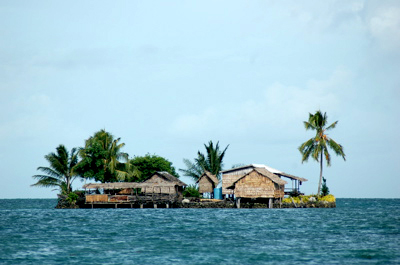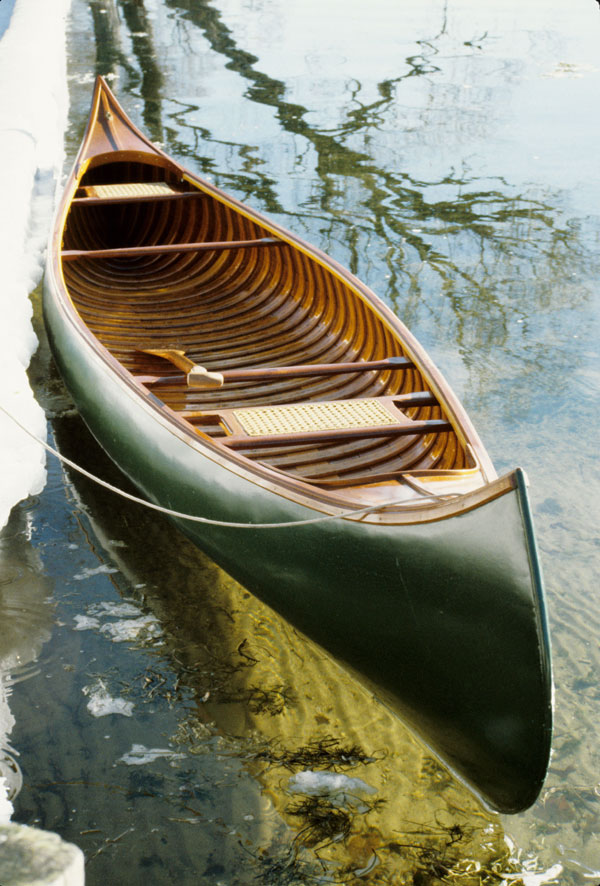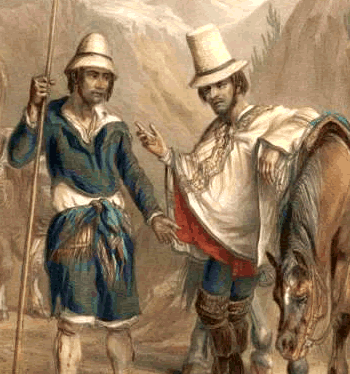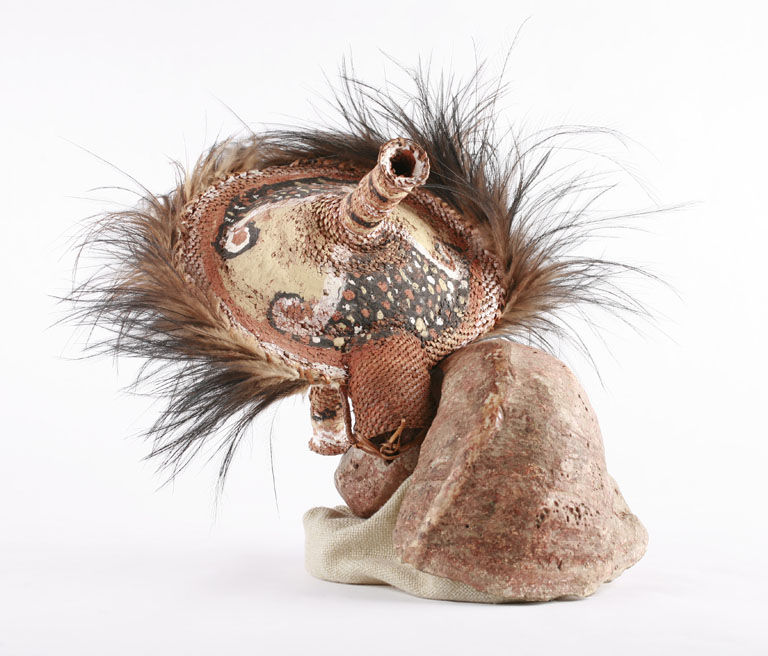|
Malaita Province
Malaita Province is the most populous and one of the largest of the nine provinces of Solomon Islands. It is named after its largest island, Malaita (also known as "Big Malaita" or "Maramapaina"). Other islands include South Malaita Island (also called "Small Malaita" or "Maramasike"), Sikaiana Island, and Ontong Java Atoll. Britain defined its area of interest in the Solomons, including Malaita, and central government control of Malaita began in 1893, when Captain Gibson R.N., of , declared the southern Solomon Islands as a British Protectorate with the proclamation of the British Solomon Islands Protectorate. The provincial capital and largest urban center is Auki, which was established as the Administrative center for Malaita Province in 1909. Tourism is largely underdeveloped in Malaita; Auki is near to the Langa Langa Lagoon, which provides opportunities for snorkeling, and the villagers provide shell making demonstrations. [...More Info...] [...Related Items...] OR: [Wikipedia] [Google] [Baidu] |
Provinces Of Solomon Islands
Solomon Islands is divided into nine provinces. The national capital, Honiara, on the island of Guadalcanal, is separately governed as the country's Capital Territory. History Under the British Solomon Islands Protectorate, there were initially 12 administrative districts: Choiseul, Eastern Solomons, Gizo, Guadalcanal, Lord Howe, Malaita, Nggela and Savo, Rennell and Bellona Islands, Santa Cruz, Shortlands, Sikaiana (Stewart), and Ysabel and Cape Marsh. The administrative centre was in Tulagi. After World War II, the protectorate was reorganised into four districts, namely Central, Western, Eastern, and Malaita, which were then further subdivided into councils. The administrative centre was moved from Tulagi to Honiara. At its independence in 1978, the protectorate became the sovereign state of Solomon Islands. Honiara continued to function as the capital of the sovereign nation, and the inherited districts and councils remained until 1981, when the nation was reorganised ... [...More Info...] [...Related Items...] OR: [Wikipedia] [Google] [Baidu] |
Alite Island
Alite Island is an island in the Solomon Islands; it is located in Malaita Province Malaita Province is the most populous and one of the largest of the nine provinces of Solomon Islands. It is named after its largest island, Malaita (also known as "Big Malaita" or "Maramapaina"). Other islands include South Malaita Island ( .... The estimated terrain elevation above sea level is 6 metres. References Islands of the Solomon Islands {{SolomonIslands-geo-stub ... [...More Info...] [...Related Items...] OR: [Wikipedia] [Google] [Baidu] |
Canoe
A canoe is a lightweight narrow water vessel, typically pointed at both ends and open on top, propelled by one or more seated or kneeling paddlers facing the direction of travel and using a single-bladed paddle. In British English, the term ''canoe'' can also refer to a kayak, while canoes are called Canadian or open canoes to distinguish them from kayaks. Canoes were developed by cultures all over the world, including some designed for use with sails or outriggers. Until the mid-19th century, the canoe was an important means of transport for exploration and trade, and in some places is still used as such, sometimes with the addition of an outboard motor. Where the canoe played a key role in history, such as the Northern United States, Canada, and New Zealand, it remains an important theme in popular culture. Canoes are now widely used for competition and pleasure, such as racing, whitewater, touring and camping, freestyle and general recreation. Canoeing has been ... [...More Info...] [...Related Items...] OR: [Wikipedia] [Google] [Baidu] |
Adagege
Adagege, alternatively spelled Ada Gege or Ada-gege, is an artificial island built on the reef in the Lau Lagoon on Malaita in the Solomon Islands; it is located in Malaita Province. The road from Auki ends at Fouia wharf opposite the islands of Sulufou and Adaege in the Lau Lagoon. History Originally settled by refugees from south of the Lau Lagoon, Adagage was taken over by the inhabitants of Sulufou and was converted into a specialised island for women to give birth at, later it was ritually cleansed and turned into a village. During the late 19th and early 20th century Adagege was the power base of Kwaisulia, a prominent strongman in the area who held influence across northern Malaita, during which time it was fortified with barbed wire A close-up view of a barbed wire Roll of modern agricultural barbed wire Barbed wire, also known as barb wire, is a type of steel fencing wire constructed with sharp edges or points arranged at intervals along the strands. Its primary use ... [...More Info...] [...Related Items...] OR: [Wikipedia] [Google] [Baidu] |
Sulufou
Sulufou is an artificial island built on the reef in the Lau Lagoon on Malaita Malaita is the primary island of Malaita Province in Solomon Islands. Malaita is the most populous island of the Solomon Islands, with a population of 161,832 as of 2021, or more than a third of the entire national population. It is also the se ... in the Solomon Islands; it is located in Malaita Province. The road from Auki ends at Fouia wharf opposite the islands of Sulufou and Adaege in the Lau Lagoon. References Islands of the Solomon Islands {{SolomonIslands-geo-stub ... [...More Info...] [...Related Items...] OR: [Wikipedia] [Google] [Baidu] |
Funaafou
Funaafou or Funa'afou is an artificial island built on the reef in the Lau Lagoon off the northeast coast of Malaita Island. Administratively, it is in the Malaita Province of the Solomon Islands Solomon Islands is an island country consisting of six major islands and over 900 smaller islands in Oceania, to the east of Papua New Guinea and north-west of Vanuatu. It has a land area of , and a population of approx. 700,000. Its ca .... Funa'afou island, which is near the edge of the Makwanu Passage, has about 200 inhabitants. It is the first artificial Island built in the Lau lagoon. According to history, the people of Baleo tribe are the first descendants of Funafou Islands References External links Funaafou on Solomonislands.com.sb Islands of the Solomon Islands {{Solomons-geo-stub ... [...More Info...] [...Related Items...] OR: [Wikipedia] [Google] [Baidu] |
Lau Lagoon
Lau Lagoon is a part of the Solomon Islands. It is located on the northeast coast of Malaita Island. The lagoon is more than 35 kilometers long and contains about 60 artificial islands built on the reef. The Lau lagoon is home to a number of different villages. The largest village is Forau, which has around 1,500 permanent residents but can swell to three times that number during important local feasts or religious holidays (e.g. Christmas, Easter). The road from Auki, which passes through Malu'u, ends at Fouia wharf opposite the islands of Sulufou and Adagege in the Lau Lagoon. Funa'afou island, which is located near the edge of the Makwanu Passage, has about 200 inhabitants. The Lau Lagoon is otherwise only accessible by sea. History of the Lau people The people of the Lau Lagoon call themselves ''wane i asi'' 'salt-water people' as distinct from ''wane i tolo'' 'bush people' who live in the interior of the island. There was a history of conflict between the bush peop ... [...More Info...] [...Related Items...] OR: [Wikipedia] [Google] [Baidu] |
Status Symbol
A status symbol is a visible, external symbol of one's social position, an indicator of economic or social status. Many luxury goods are often considered status symbols. ''Status symbol'' is also a sociological term – as part of social and sociological symbolic interactionism – relating to how individuals and groups interact and interpret various cultural symbols. By region and time As people aspire to high status, they often seek also its symbols. As with other symbols, status symbols may change in value or meaning over time, and will differ among countries and cultural regions, based on their economy and technology. For example, before the invention of the printing press, possession of a large collection of laboriously hand-copied books was a symbol of wealth and scholarship. In later centuries, books (and literacy) became more common, so a private library became less-rarefied as a status symbol, though a sizable collection still commands respect. In some past cultur ... [...More Info...] [...Related Items...] OR: [Wikipedia] [Google] [Baidu] |
Cash
In economics, cash is money in the physical form of currency, such as banknotes and coins. In bookkeeping and financial accounting, cash is current assets comprising currency or currency equivalents that can be accessed immediately or near-immediately (as in the case of money market accounts). Cash is seen either as a Reserve (accounting), reserve for payments, in case of a structural or incidental negative cash flow or as a way to avoid a downturn on financial markets. Etymology The English word "cash" originally meant "money box", and later came to have a secondary meaning "money". This secondary usage became the sole meaning in the 18th century. The word "cash" derives from the Middle French ''caisse'' ("money box"), which derives from the Old Italian ''cassa'', and ultimately from the Latin ''capsa'' ("box").. History In Western Europe, after the fall of the Western Roman Empire, coins, silver jewelry and hacksilver (silver objects hacked into pieces) were for centuries the ... [...More Info...] [...Related Items...] OR: [Wikipedia] [Google] [Baidu] |
Bride Price
Bride price, bride-dowry ( Mahr in Islam), bride-wealth, or bride token, is money, property Property is a system of rights that gives people legal control of valuable things, and also refers to the valuable things themselves. Depending on the nature of the property, an owner of property may have the right to consume, alter, share, r ..., or other form of wealth paid by a groom or his family to the woman or the family of the woman he will be married to or is just about to marry. Bride dowry is equivalent to dowry paid to the groom in some cultures, or used by the bride to help establish the new household, and dower, which is property settled on the bride herself by the groom at the time of marriage. Some cultures may practice both simultaneously. Many cultures practiced bride dowry prior to existing records. The tradition of giving bride dowry is practised in many Asia, Asian countries, the Middle East, Africa, parts of Africa and in Oceania, some Pacific Island societi ... [...More Info...] [...Related Items...] OR: [Wikipedia] [Google] [Baidu] |
Shell Money
Shell money is a medium of exchange similar to coin money and other forms of commodity money, and was once commonly used in many parts of the world. Shell money usually consisted of whole or partial sea shells, often worked into beads or otherwise shaped. The use of shells in trade began as direct commodity exchange, the shells having use-value as body ornamentation. The distinction between beads as commodities and beads as money has been the subject of debate among economic anthropologists. Shell money has appeared in the Americas, Asia, Africa and Australia. The most familiar form may be the wampum created by the Indigenous peoples of the East Coast of North America, ground beads cut from the purple part of marine bivalve shells. The shell most widely used worldwide as currency was the shell of ''Cypraea moneta'', the money cowry. This species is most abundant in the Indian Ocean, and was collected in the Maldive Islands, in Sri Lanka, along the Malabar coast, in Borneo ... [...More Info...] [...Related Items...] OR: [Wikipedia] [Google] [Baidu] |





